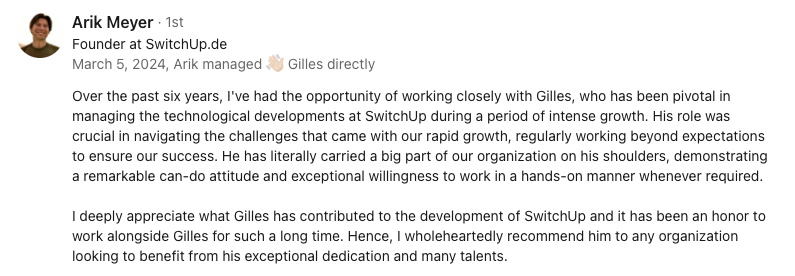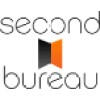Abstract:
Blockchain technology offers a decentralized, tamper-proof system for recording transactions, benefiting supply chain security with enhanced transparency and traceability. Technology leaders must prioritize cybersecurity and work on establishing defense lines against threats, incorporating smart contracts into systems. Creating a culture of improvement, collaboration, accountability, and transparency is crucial. This enables senior technology leaders to effectively manage the integration of blockchain technology, supply chain security, cybersecurity, and smart contracts, leading to sustainable competitive advantage.
intriguing introduction
Picture this: a tech world where transparency and traceability aren't just buzzwords but everyday norms. As a Chief Technology Officer, I find blockchain technology to be incredibly transformative, especially in the realm of supply chains. You see, blockchain’s decentralized and tamper-proof nature offers just the kind of robust security that's been long overdue in supply chain management. Imagine having a system where every transaction is immutable and every step of a product’s journey is recorded and accessible in real-time. It's not just a technology—it's a game-changer.
Now, you might be wondering, why the fuss about transparency and traceability? These aren't just nice-to-have features; they're critical. With conventional systems, supply chains can be murky, making it difficult to root out inefficiencies and fraud. With blockchain, we're talking about a complete overhaul that promises unparalleled levels of security and visibility. Fasten your seatbelts, folks; we're on the brink of something revolutionary.
enhanced transparency and traceability
When it comes to enhancing supply chains, transparency and traceability aren't just icing on the cake—they're the cake itself. Blockchain technology achieves this by recording every transaction in an immutable ledger. In layman terms, once something is entered, it can't be changed. This is akin to carving details into a slab of concrete rather than scribbling them in sand.
Think about it: with blockchain, every step a product takes—from the initial raw material source to the final retail shelf—is meticulously logged. Imagine tracking your morning coffee's journey from the farm where it was grown, through the roastery, to your local cafe. Every detail is accessible and verifiable, ensuring authenticity. This isn’t just cool—it’s transformational.
For businesses, this level of traceability is monumental. You can readily identify where a problem originates, whether it’s a defective batch of products or a shipment delay. No more playing the blame game; the ledger tells it all. This also means a dramatic reduction in fraud. Those sneaky counterfeit goods trying to pass off as genuine products? With blockchain, they don’t stand a chance. Every legitimate product has its own trustworthy, unbreakable record trail.
Moreover, enhanced transparency bolsters consumer confidence. When customers know they can trust the product they’re buying, it fosters brand loyalty and increases sales. Transparency shifts the supply chain paradigm from a murky maze to a well-lit runway. Businesses and consumers alike get to reap the rewards of clarity and accountability.
So, in a nutshell, blockchain helps transform supply chains into a more transparent and traceable landscape—making it simpler to follow every product's journey. Gone are the days of guessing and assuming; with blockchain, every link in the supply chain is illuminated.
incorporating smart contracts
Now, let's talk about smart contracts. It's not some fancy legal jargon—no lawyers needed here! Think of smart contracts as self-executing contracts with the terms directly written into code. These are housed on the blockchain, enabling them to work autonomously without the need for intermediaries. The beauty of smart contracts lies in their ability to automate processes, thus boosting operational efficiency and ensuring compliance across the board.
In supply chain systems, smart contracts can truly shine. For example, imagine a smart contract that automatically triggers a payment as soon as a shipment is confirmed as delivered. No human intervention required, no delays in processing. This drastically reduces administrative overhead and the chances of human error. Plus, the immutable nature of blockchain ensures that once these conditions are set, they can’t be tampered with.
But the magic doesn’t stop there. Smart contracts can enforce compliance with pre-set terms and conditions. Let’s say a batch of perishable goods needs to be maintained at a specific temperature during transit. A smart contract can be programmed to release payment only if the temperature conditions are met. If the conditions aren’t met, the contract can refuse payment or trigger an alert.
Here are a few ways smart contracts can revolutionize supply chain management:
- Automating routine tasks: From generating invoices to releasing payments and even reordering inventory, smart contracts handle it all.
- Minimizing errors: Automated processes mean fewer human touchpoints and less room for mistakes.
- Ensuring compliance: Enforce conditions like temperature controls, delivery deadlines, and quality checks without any manual intervention.
In essence, smart contracts bring a high level of precision and reliability to supply chain management. By automating critical processes and eliminating intermediaries, they not only slash operational costs but also reduce delays and errors. It's like having an army of diligent employees working tirelessly, but in code form. The future of supply chains is not just about being faster but also about being smarter—and smart contracts are a key part of that transformation.
prioritizing cybersecurity
When we talk about integrating blockchain into supply chains, one can't afford to overlook cybersecurity. Think of it as the digital equivalent of locking your front door—absolutely critical. While blockchain offers inherent security features like decentralization and immutability, it's not invincible. There are potential threats and vulnerabilities that could jeopardize the very advantages it brings.
Cyber threats such as hacking, data breaches, and denial-of-service attacks can still pose risks. Plus, human errors, like poor key management or negligent coding practices, can lead to severe security lapses. Being the gatekeepers of this cutting-edge technology, we, technology leaders, must prioritize cybersecurity to safeguard sensitive data and ensure the integrity of the system.
key strategies for robust defense
- Multi-layered security: Implementing multiple layers of defense can help mitigate risks. Think firewalls, intrusion detection systems, and rigorous authentication protocols. It’s like having several bouncers at a nightclub—you want that extra protection.
- Regular audits: Conducting frequent security audits can help identify and rectify vulnerabilities before they become full-blown issues. Let’s face it, never hurts to have an extra pair of eyes scanning for trouble.
- Employee training: Educating staff about security best practices and potential threats is crucial. A well-informed team is less likely to make the mistakes that could open the door to cyber-attacks.
- Strong encryption: Encrypting data ensures that even if it falls into the wrong hands, it's virtually useless without the proper decryption keys. It's like speaking in code—only those with the key can understand the message.
Incorporating these measures can make blockchain technology a formidable tool for securing supply chains. As I see it, prioritizing cybersecurity isn't just about protecting assets; it's about creating a robust foundation for innovation. If we want to make the most out of what blockchain has to offer, safeguarding our digital assets must be top of the agenda. Otherwise, we're just building castles in the sand—impressive but easily washed away.
creating a culture of improvement and collaboration
Alright, let's talk about something that's often overlooked but is absolutely essential: creating a culture that prioritizes continuous improvement and collaboration. Think of it as the secret sauce that elevates blockchain integration from good to great. You see, technology alone isn't the magic wand; it's the culture around it that makes or breaks its success.
In my opinion, an environment where everyone feels responsible for security and efficiency is transformative. It encourages innovation, leading to more secure and efficient supply chain practices. When people are encouraged to bring fresh ideas to the table, the room for innovation swells. Plus, when there’s accountability, everyone feels they have a stake in the technology’s success.
fostering a collaborative culture
- Encourage Open Communication: Create channels where team members can share ideas and discuss challenges freely. Picture a tech jam session where every participant adds value.
- Promote Continuous Learning: Offer workshops, training sessions, and certifications. The more knowledgeable your team, the more robust your blockchain implementation will be. Knowledge is power, after all!
- Set Clear Goals: Define what success looks like and ensure everyone knows their role in achieving it. This keeps everyone aligned and motivated.
- Foster Team Building: Organize team-building activities. When people trust each other, collaboration becomes second nature. It’s like a well-oiled machine, humming perfectly.
- Encourage Accountability: Make accountability a core value. When everyone owns their part, the collective effort leads to unparalleled success.
By fostering a culture of continuous improvement and collaboration, integrating blockchain technology becomes more than just a task—it's a shared mission. Employees feel valued and motivated to contribute to its success, leading to a secure and efficient supply chain system. So, invest in your people and watch them transform your blockchain journey into a spectacular success story.
effective management of blockchain integration
In the quest for leveraging blockchain to secure supply chains, the role of senior technology leaders is paramount. As a CTO, I believe that successful integration hinges on strategic planning, skilled management, and informed decision-making. It's like being the captain of a high-tech ship—you need to chart the course wisely to avoid potential icebergs.
First, strategic planning is crucial. We must identify how blockchain can be best deployed to address our supply chain challenges. This involves conducting thorough feasibility studies and setting clear, achievable milestones. It’s not just about jumping on the blockchain bandwagon—careful analysis ensures we harness its full potential effectively.
the roadmap to successful integration
- Allocate Resources Wisely: Ensuring that you have the right talent and tools is key to a smooth integration. Think of it as equipping an expedition—without proper gear, you won’t get far.
- Skilled Management: Leading cross-functional teams and maintaining clear communication channels is essential. Keeping everyone on the same page ensures the project runs seamlessly.
- Informed Decision-Making: Staying abreast of the latest developments in blockchain technology helps make timely, well-informed decisions. Continuous learning isn’t just for the juniors; we seniors need it too!
Furthermore, it's vital to create a solid change management process. This means preparing the team for new workflows and setting realistic expectations. Just like training for a marathon, steady preparation beats a last-minute scramble any day.
By effectively managing blockchain integration, we can secure a sustainable competitive advantage. It’s about transforming potential into performance, and let's face it, who doesn't love a well-executed strategy?
conclusion and lasting impression
Reflecting on our exploration, it's clear that blockchain technology offers groundbreaking advances in securing supply chains. From enhancing transparency and traceability to automating processes with smart contracts, these innovations provide unparalleled benefits. Prioritizing cybersecurity and fostering a culture of improvement and collaboration further solidify our ability to implement and manage blockchain systems effectively.
Looking ahead, the true potential of blockchain in supply chain management is nothing short of monumental. As technology leaders, we must embrace these advancements to build robust, transparent, and efficient supply chains. In doing so, we'll not only safeguard our assets but also drive innovation and trust across industries. Here's to securing a future that’s as transparent as it is promising.
You might be interested by these articles:
- Decentralized Identity Management Using Blockchain
- Enhancing Data Security with Blockchain
- Blockchain's Role in Proving Real Sustainability Efforts
See also:
- Gilles Crofils: Skills, Industries and Markets
- Harnessing Tech to Boost Food Security
- Navigating the Surge of Co-Working & Nomadic Work
- Bridging Cultural Gaps in Education Through Inclusive Strategies
- Advancing Beyond Limits with BCIs
- Fog computing: boosting fintech innovation and compliance in Europe
- Revolutionizing Medicine with Genomic Innovations





